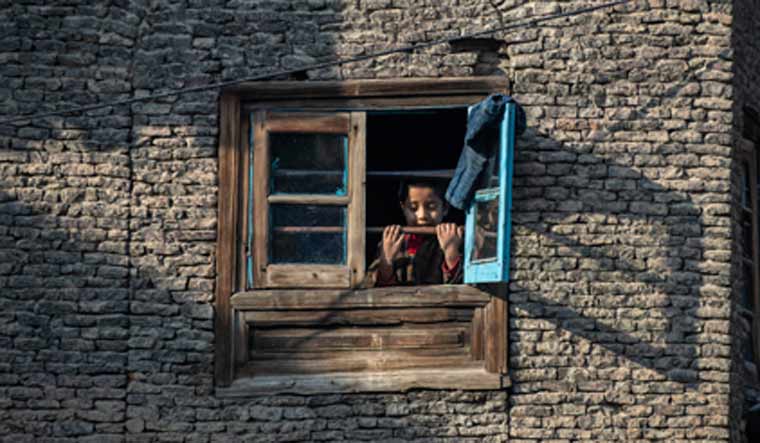Last year, in September, Srinagar—the seat of power in Kashmir—was declared militancy-free. But a year later, the capital city, which houses the picturesque Dal Lake, with houseboats and colourful shikaras, is witnessing a sudden spike in attacks on civilians and security officials.
A peaceful Srinagar with tourists roaming around Dal Lake or shopping at PoloView, Residency Road comes in handy to showcase normalcy in Kashmir.
But the targeted killings, especially of those belonging to the minority Sikhs, Pandit (non-migrant Kashmiri Hindus) and non-locals has not only jolted the administration but also led to more militarisation of the city.
Around 55 companies of CRPF and 25 companies were rushed as reinforcements after Home Minister Amit Shah’s visit in October to J&K. Some 30 are being deployed in Srinagar alone. Many of the freshly arrived troops have taken up marriage halls built by the Srinagar Municipality in congested localities for social gathering. The marriage halls are also rented by locals to receive mourners when someone dies in a locality.
In Srinagar, the district administration has marked marriage halls in Shatrashahi, Barbar Shah, Nowshera, Ilahi Bagh, Mal Bagh and other localities for CRPF without consulting the Srinagar Municipality.
The troop build-up has not gone down well with the locals as it raised anxieties, and strengthened the sense of a siege. Checkpoints have come up across the city. A day before Shah was to visit J&K, the police seized scores of motorbikes and two-wheelers without specifying the reason, forcing social activist Naveed Bakhtiyar to move court against the police. The court directed SSP Srinagar to submit the compliance report within 10 days.
After the targeted killings, Srinagar has also witnessed several encounters. On October 8, police said it had killed a militant in an encounter at Natipora. “#Terrorists fired upon the Srinagar Police team. Police also retaliated. During the ensuing chance #encounter, one terrorist got neutralised but one escaped. Arms & ammunition recovered. Identification being ascertained. @JmuKmr Police," the J&K police said in a tweet. On November 11, the police said a militant was killed in an encounter at Hamdaniya Colony, Bemina. He was identified as Amir Riyaz of Khrew Pulwama, affiliated with militant outfit Mujahideen Ghazwat-ul-Hind. Police said that an encounter broke out in Bemina after J&K Police and Central Reserve Police Force cordoned off the area after inputs of the presence of militants. “As cordon was being laid, militants opened fire,” police said. “They retaliated and in the ensuing gunfight one terrorist was killed.”
On October 14, J&K police said it had killed four persons—a foreign militant Bilal Bhai, his associate Amir, an Overground Worker Dr Mudasir Gul and Altaf Ahmed Bhat, owner of the building where the encounter took place.
IGP Vijay Kumar said the police cordoned off the area after information about the presence of militants in the building. Gul was running a fake call centre in the building and had been helping militants with logistics. He said the bodies of Gul and Bhat were not handed over their families due to law and order considerations. Kumar said Bhat was killed in crossfire.
However, Gul and Bhat’s families contested the police claim and demanded their bodies for burial. They also staged protests at Press Enclave in Srinagar at sub-zero temperatures in the night before being forcibly evicted and detained. The two families, however, did not relent and continued their protest. The killings created anger across Kashmir as the police version of the encounter lacked constituency and did not seem convincing. The two families rubbished police’s claim that the two had anything to do with militancy. The incident saw mainstream and civil society rallying behind the families’ demand for the bodies for burial. Fearing widespread protests, Bhat and Gul’s bodies were exhumed and handed over to their families for a low-key burial.
The government has ordered a magisterial probe into the incident but there is little hope that the guilty will be punished.
Amir’s family has also pleaded with the government to return his body for last rites. His father Abdul Lateef Magray said he wants to give his son a proper burial.
“I have fought militants and even killed one with a stone at my home in Banihal and won a bravery award from the government, but today my own son has been labelled a militant and killed,’’ he said.
Political observers say that, in the past, Srinagar has seen lesser militancy than other districts, but after the abrogation of Article 370, attacks in the city have seen an incremental rise. They believe the central Kashmir district continues to be a strong separatist bastion as is reflected in the repeated boycott of the elections by the majority, and incidents like the controversial Hyderpora encounter will evoke a strong reaction as in the past.





